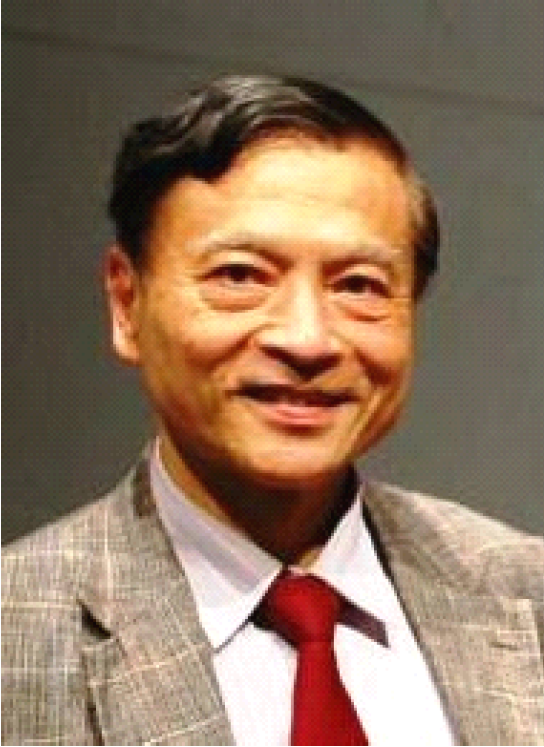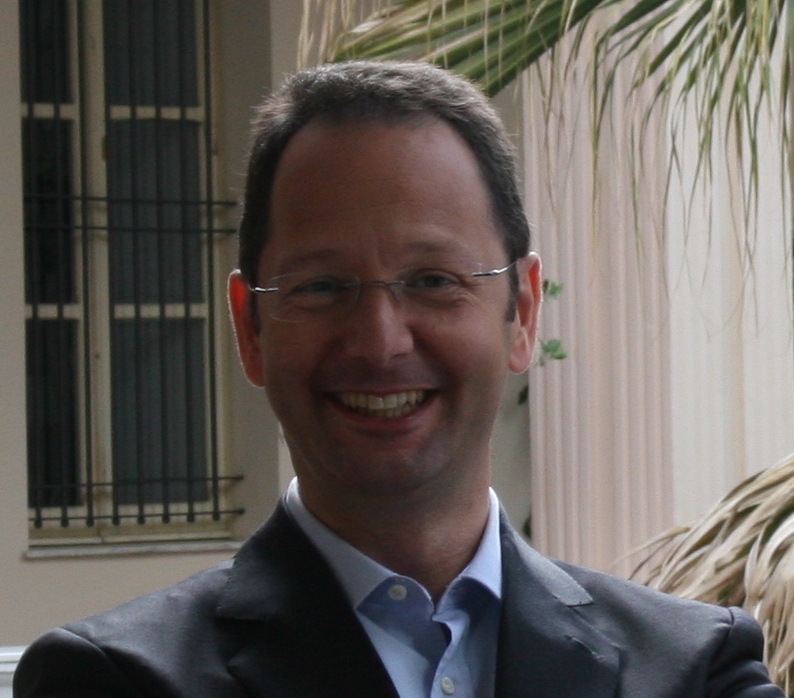Keynote Speakers
|
Topic 1: 
IPR and Applications to e-Forensics and Smart Cities Patrick S. P. Wang Fellow, IAPR, ISIBM, WASE, IETI Distinguished Fellow Professor of Computer and Information Science Northeastern University, Boston, MA, USA |
Abstract: This talk is concerned with fundamental aspects of Intelligent Pattern Recognition (IPR) and applications. It basically includes the following: Basic Concept of Automata, Grammars, Trees, Graphs and Languages. Ambiguity and its Importance, Brief Overview of Artificial Intelligence (AI), Brief Overview of Pattern Recognition (PR), What is Intelligent Pattern Recognition (IPR)? Interactive Pattern Recognition Concept, Importance of Measurement and Ambiguity, How it works, Modeling and Simulation, Basic Principles and Applications to Computer Vision, Security, e-Forensics, Road Sign Design, biomedical diagnosis, Safer biomedical diagnosis, Traffic and Robot Driving with Vision, Ambiguous (design of Road Signs vs Unambiguous (Good) Road Signs, How to Disambiguate an Ambiguous Road Sign? What is Big Data? and more Examples and Applications of Learning and Greener World using Computer Vision. Finally, some future research directions are discussed.
Biography: As IEEE and ISIBM Distinguished Achievement Awardee, Dr. Wang was on the faculty at University of Oregon and Boston University, and senior researcher at Southern Bell, GTE Labs and Wang Labs. Dr. Wang was Otto-Von-Guericke Distinguished Guest Professor of Magdeburg University, Germany, and iCORE (Informatics Circle of Research Excellence) visiting professor of University of Calgary, Canada, Honorary Advisor Professor for China’s Sichuan University, Chongqing University, Xiamen University, and Guangxi Normal University, Guilin, Guangxi. In addition to his research experience at MIT AI (Artificial Intelligence) Lab, Dr. Wang has been visiting professor and invited to give lectures, do research and present papers in a number of countries from Europe, Asia and many universities and industries in the U.S.A. and Canada. Dr. Wang has published over 300 technical papers and 26 books in Pattern Recognition, A.I. Biometrics and Imaging Technologies and has 3 OCR patents by US and Europe Patent Bureaus. One of his books is so important and widely cited that USA Department of Homeland Security (DHS) use it as reference for Call For Proposals 2010. Image Pattern Recognition–Synthesis and Analysis of Biometrics (WSP), and has been involved with research projects ~US $1.2 million in AI/PR/CV/IP.
Dr. Wang has organized numerous international conferences and workshops including conference co-chair of MDA2019, NY, USA, ICPRAI2018, Montreal, Canada, the 18th IAPR ICPR2006 , Hong Kong, China, and served as reviewer for many journals and NSF grant proposals. Prof. Wang is currently founding Editor-in-Chief of IJPRAI (Int. J. Pattern Recognition and A.I.), and Machine Perception & Artificial Intelligence Book Series, World Scientific Publishing Co. Imperial College Press, London, UK, and elected chair of IAPR-SSPR(Int. Assoc. for P.R.). Dr. Wang has been invited to give keynote talks in many International Conferences, including: MDA2019,NY,USA, ICPRAI2018, Montreal, Canada, ICBFE2017, Singapore, ICMMI2017, Poland, ICGIP2017, Qingdao, China, ICGIP2016, Tokyo, Japan, ICCIS2015, Shenzhen, China, 2015, IEEE-WCSC2014, U.C. Berkeley, UKSim2014, Cambridge, UK, SimMod2013, Madrid, Spain, MLDM2012, Berlin, Germany, Pretoria, South Africa, VISAPP2009, Lisbon, Portugal, UKSim2011, Cambridge, UK, IEEE-SMC2010, Montreal, San Antonio, Istanbul respectively, WorldComp2010, Las Vegas, USA, CIS2007, Harbin, China, eForensics2008, Adelaide, Australia, ISI2008, Taipei, Taiwan, BroadCom2008, AIA2007, Innsbruck, and Austria, IAS2007, Manchester, UK, etc.
In addition to his technical achievements and contributions, Prof. Wang has been also very active in community services, and has written many articles on Du Fu, Li Bai’s poems, Verdi, Puccini, Bizet, and Wagner’s operas, and Mozart, Beethoven, Schubert and Tchaikovsky’s symphonies. A collection of articles are published in his books: “劍橋狂想曲”by 文史哲,and “Harvard Meditation Melody”(哈佛冥想曲) by 健行文化 Jianxing Pub. Co., Taipei, Taiwan, which won best publication award in Taiwan. https://sites.google.com/site/mozart200, patwang@ieee.org, pwang@acm.org , mozart200@gmail.com.
|
Topic 2: 
Face Recognition in the Wild: Challenges and Perspectives Massimo Tistarelli Fellow member of the IAPR, Senior member of IEEE, Vice President of the IEEE Biometrics Council.
Phd, full Professor in Computer Science. |
Abstract: Face Recognition has been extensively studied as a mean to facilitate man-machine interaction in a variety of different applications. Due to the imaging variabilities and to the complex nature of the face shape and dynamics, analyzing and recognizing human faces from digital images is still a very complex task. On the other hand, the high demand for more accurate systems operating in uncontrolled scenario required to devise novel approaches capable to deal with unexpected variations in the face appearance over time, still providing very high recognition accuracy.
In the last decade deep learning techniques have strongly influenced many aspects of computational vision. Many difficult vision tasks can now be performed by deploying a properly tailored and trained deep network. The enthusiasm for deep learning is unfortunately paired by the present lack of a clear understanding of how they work and why they provide such brilliant performance. The same applies to Face Recognition. Deep learning has been successfully applied to several biometric recognition tasks, including face recognition. VGG-face is possibly the first deep convolutional network designed to perform face recognition, obtaining unsurpassed performance at the time it was firstly proposed.
Over the last years, several and more complex deep convolutional networks, trained on very large, mainly private, datasets, have been proposed still elevating the performance bar also on quite challenging public databases, such as the Janus IJB-A and IJB-B. Despite of the progress in the development of such networks, and the advance in the learning algorithms, the insight on these networks is still very limited. For this reason, in this talk we analyse a biologically-inspired network based on the HMAX model, not with the aim of pushing the recognition performance further, but to better understand the representation space produced from a deep network and how it may help
explaining the process undergoing a real biological neural architecture. In this talk we analyse this model network trying to better understand the role of the different layers, including the retino-cortical mapping performed by the log-polar image resampling. The following issues will be addressed:
- • What is the representation space within a deep convolutional network and how this reflects the organization of the human visual cortex.
- • How the retino-cortical mapping, implemented in the human visual system, may impact the representation space, hence improving the classification performance.
- • The relevance of peripheral vs foveal vision for face recognition.
The obtained results will be generalized to provide hints for a better interpretation of a general deep network and trying to contribute to a theory of deep learning.
Biography: Massimo Tistarelli received the Phd in Computer Science and Robotics in 1991 from the University of Genoa. He is Full Professor in Computer Science (with tenure) and director of the Computer Vision Laboratory at the University of Sassari, Italy. Since 1986 he has been involved as project coordinator and task manager in several projects on computer vision and biometrics funded by the European Community.
Since 1994 he has been the director of the Computer Vision Laboratory at the Department of Communication, Computer and Systems Science of the University of Genoa, and now at the University of Sassari, leading several National and European projects on computer vision applications and image-based biometrics.
Prof. Tistarelli is a founding member of the Biosecure Foundation, which includes all major European research centers working in biometrics. His main research interests cover biological and artificial vision (particularly in the area of recognition, three-dimensional reconstruction and dynamic scene analysis), pattern recognition, biometrics, visual sensors, robotic navigation and visuo-motor coordination. He is one of the world-recognized leading researchers in the area of biometrics, especially in the field of face recognition and multimodal fusion. He is coauthor of more than 150 scientific papers in peer reviewed books, conferences and international journals. He is the principal editor for the Springer books “Handbook of Remote Biometrics” and “Handbook of Biometrics for Forensic Science”.
Prof. Tistarelli organized and chaired several world-recognized several scientific events and conferences in the area of Computer Vision and Biometrics, and he has been associate editor for several scientific journals including IEEE Transactions on PAMI, IET Biometrics, Image and Vision Computing and Pattern Recognition Letters.
Since 2003 he is the founding director for the Int.l Summer School on Biometrics (now at the 17th edition – http://biometrics.uniss.it). He is a Fellow member of the IAPR and Senior member of IEEE, and Vice President of the IEEE Biometrics Council.
IPR and Applications to e-Forensics and Smart Cities
--Prof. Patrick S.P. Wang
Face Recognition in the Wild: Challenges and Perspectives
--Prof. Massimo Tistarelli




